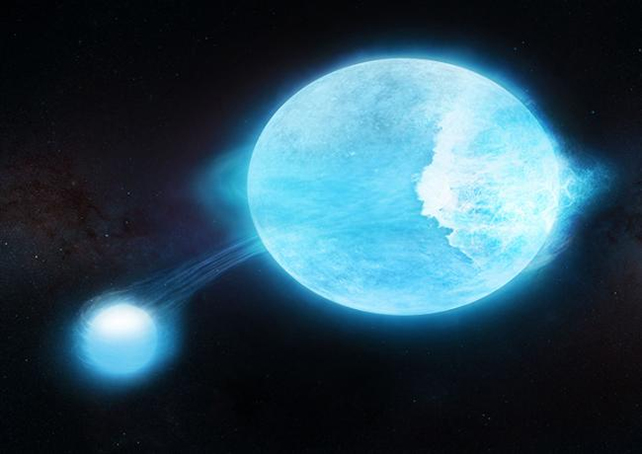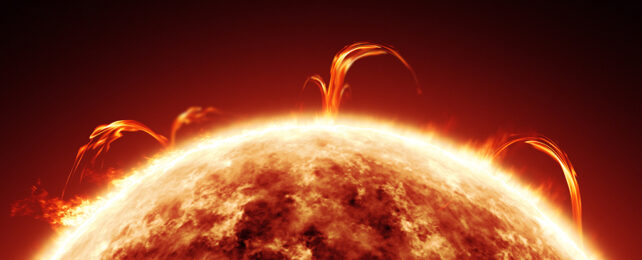When it comes to deep space phenomena, the gigantic plasma waves breaking around star system MACHO 80.7443.1718 – so named for the MACHO Project that first spotted it in the 1990s – really do take some beating.
MACHO 80.7443.1718 is what's known as a heartbeat star, a binary star system where two stars orbit each other with drastically variable distances between them. They get their name from the way they pulse in brightness, as a heartbeat might do on an electrocardiogram.
In this system, tidal waves of ultra-hot matter roll across the larger star – which is some 35 times the mass of our own Sun – as the smaller star swings closer to it, during the celestial dance that the two stars are engaged in.

And it's difficult to comprehend the size of these waves, which reach about a fifth of the radius of the larger star: the waves can reach some 4.3 million kilometers (2.7 million miles) high, taller than three of our own Suns stacked on top of each other.
It's the sort of event that would be the centerpiece of a science fiction movie. At certain points, these rising and falling waves completely envelop the secondary star, as the researchers demonstrate in a video simulation.
"Each crash of the star's towering tidal waves releases enough energy to disintegrate our entire planet several hundred times over," says astrophysicist Morgan MacLeod, from the Harvard-Smithsonian Center for Astrophysics in the US. "These are really big waves."

MacLeod and his colleague Abraham Loeb were drawn to MACHO 80.7443.1718 because of the large fluctuations in its brightness: they observed swings of up to 20 percent rather than the usual 0.1 percent.
A computer model was then generated to try and get a better understanding of why this was happening. The gargantuan tidal waves that the model produced help explain the substantial swings in brightness coming from the star system.
They're produced by the push and pull of gravity as the stars get closer and move further apart, in a similar sort of way that the Moon generates tides on Earth. The huge energy release of the crashing waves has an impact on the rotation speed of the stars too, the researchers discovered.
Nothing like this has been seen on a star before, and the researchers have labeled it as a 'heartbreak' star as well as a heartbeat star, in reference to the gigantic waves breaking across the surface of the larger object.
"This heartbreak star could just be the first of a growing class of astronomical objects," says MacLeod.
"We're already planning a search for more heartbreak stars, looking for the glowing atmospheres flung off by their breaking waves."
The research has been published in Nature Astronomy.
